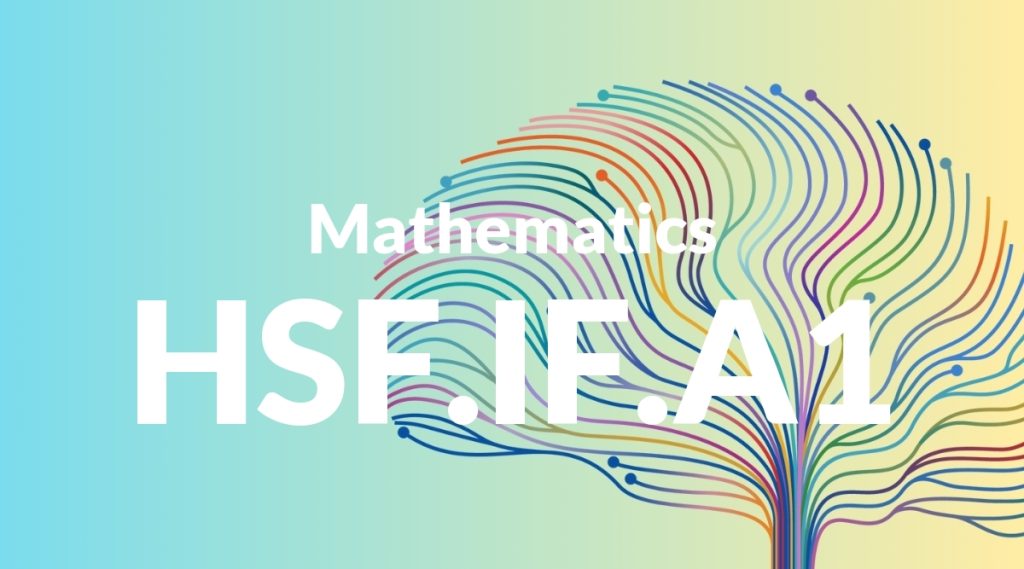Standard: HSF.IF.A1 – Understand that a function from one set (called the domain) to another set (called the range) assigns to each element of the domain exactly one element of the range. If f is a function and x is an element of its domain, then f(x) denotes the output of f corresponding to the input x. The graph of f is the graph of the equation y = f(x).
Grade level: High School: Functions
Subject: Mathematics
Domain: Interpreting Functions
Teacher Overview
This standard is foundational in understanding how functions operate, which is crucial for higher-level mathematics. It emphasizes the unique assignment of outputs to inputs, a concept that underpins much of algebra and calculus. Students need to be comfortable with algebraic expressions, graphing equations, and understanding sets and their elements.
Mastering this standard prepares students for advanced topics in mathematics such as exploring different types of functions, transformations, and calculus concepts.
Common Misconception 1
Some students believe that a function can have multiple outputs for a single input, which contradicts the definition of a function. This misconception can lead to errors in graphing and interpreting functions.
Intervention 1
Use graphing calculators or software to visually demonstrate how each input maps to a single output. Reinforce this with hands-on activities where students create their own function graphs.
Common Misconception 2
Students often confuse the domain (set of all possible inputs) with the range (set of all possible outputs). This confusion can lead to mistakes in identifying function behaviors.
Intervention 2
Utilize Venn diagrams and mapping diagrams to clearly differentiate between domain and range. Provide practice problems that specifically focus on identifying and distinguishing these sets.
Prerequisite Knowledge
Students should have a solid understanding of basic algebraic concepts, including variables, equations, and graphing linear equations. Familiarity with sets and their elements is also important.
Subsequent Knowledge
After mastering this standard, students will be able to delve deeper into different types of functions (e.g., exponential, logarithmic), understand function transformations, and explore more complex function behaviors in calculus.
Instructional Activities
- Graphing various functions and identifying their domains and ranges
- Using real-world data to create and interpret function graphs
- Interactive online simulations that illustrate function behavior
- Group projects that involve modeling real-life scenarios with functions
- Quizzes and practice problems focused on function definitions and properties




